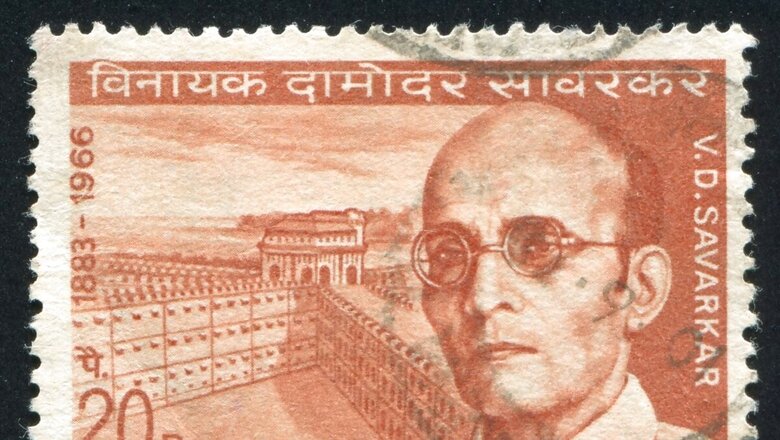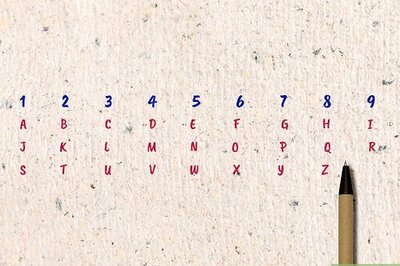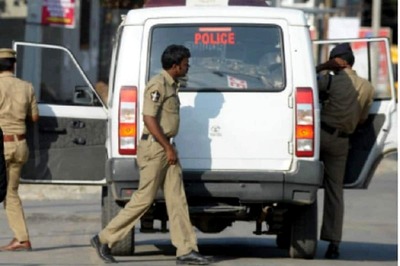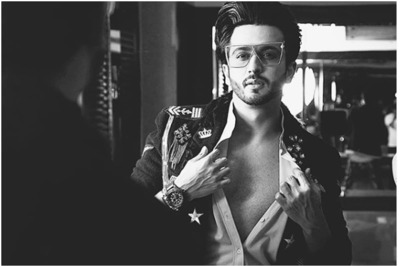
views
In 1898, aged 16, a fiery young man vowed before his family deity to carry out an armed revolt against British rule. Veer Savarkar was way ahead of his contemporary leaders on his clarity of what India needed to do. It took close to 30 years for the Indian National Congress to demand “Purna Swaraj” (complete self-rule) in 1929 at the Lahore session. Even the best brains in INC failed to understand Veer Savarkar’s ideas.
Life in London: His stay in London for four years was an action-packed time that sparked many Indians to fight for Independence. A young man from Tamil Nadu reached London to become a successful barrister and learn English and western dance. Destiny took him to meet Veer Savarkar at India House. The flame of freedom was lit in him and he fought for Independence until his last breath. This man was none other than Shri VVS Aiyar.
Mahatma Gandhi was once invited to India House and they both discussed India’s Independence. Veer Savarkar concluded that armed struggle was the best route for complete freedom and that he required 2 lakh Indians to achieve this. Gandhi disapproved of his ideas.
No historian can ignore his magnum opus The Indian War of Independence, 1857, which inspired revolutionaries of the freedom movement. Originally written in Marathi, it was translated to English under the supervision of VVS Aiyar.
British Intelligence thought the book would lead to rebellion and it was smuggled to Paris. The first English edition was published in Holland and copies were smuggled back to France and later to India. It was perhaps the first book in recent history which was banned in India even before it was published. The ban was lifted in 1946 during the Congress rule in Bombay.
The second edition was released in America by Lala Hardayalji, who managed The Ghadar and was a member of Abhinav Bharat, which was founded by Veer Savarkar in 1904. From then on, the book was secretly read by Indians who were serving in British Army.
No wonder that during the First World War, some of them fought against Britain. Subsequent editions were published by Bhagat Singh and Netaji. It is said that a copy in Tamil was lost.
Britain had planned to extradite Savarkar to India after his arrest in London. But he escaped from the streamer SS Morea on July 7, 1910, and landed in the Port of Marseilles, France. A political prisoner from London landing in France was a case fit for the International Court of Justice. Fortunately, many newspapers supported Savarkar’s cause, which is unthinkable now.
On Jan 31, 1911, Veer Savarkar was sentenced to 50-year imprisonment, the only person in the history of the British Empire to have received it. Savarkar composed and wrote poems on the prison walls with thorns and pebbles, said to run into more than 10,000 lines.
Social Reform: In 1920, from the Andamans, Savarkar wrote: “Just as I feel that I should rebel against foreign rule over Hindustan, I feel I should rebel against caste discrimination and untouchability.”
In 1924, during his visit to Bhagur, he was shocked to see orthodox practices and had tea in a so-called “untouchable” house. He wished that after his death, his body should be carried by a Mahar, a Maratha, a Brahmin and a Mang.
He started Ganesh festivals in Ratnagiri district in 1925 and was instrumental in bringing “untouchables” to Vithoba temple, the most important temple in Ratnagiri.
Veer Savarkar was a truly progressive Hindu and social reformer who fought against untouchability, and the only leader who fearlessly and whole-heartedly supported BR Ambedkar’s struggle.
RSS founder Dr KB Hegdewar met Veer Savarkar in March 1925, and they had long discussions on Hindu unity and its own challenges. To Savarkar, a Hindu meant “a person who regards this land of Bharat-Varsha from the Indus to the seas as his fatherland as well as his holyland, that is the cradle land of his religion”.
Back to Active Politics: In 1940s, the Indian National Army (INA) made tremendous progress in the fight for Independence. “I am saluting you, the symbol of sacrifice. I have the joy of doing my duty towards one of my elderly comrades-in-arms,” said Ras Behari Bose, founder of the INA and president of the Hindu Mahasabha, Japan.
Commander Netaji on June 25, 1944, said on Singapore Radio: “It’s heartening to know Veer Savarkar is fearlessly exhorting the youth of India to enlist in the armed forces.”
Netaji Subhash Chandra Bose met Savarkar at Savarkar Sadan on June 22, 1940, to discuss about the Indian political and international situation.
Rebel and revolutionary till his last breath, Savarkar decided to go on a fast from February 3, 1966 and the eternal hero died on February 26.
Swatantra Veer Savarkar is undoubtedly the “prince of Indian revolutionaries” and Chanakya of our times. His suffering is a message for generations to come.
The late Atal Bihari Vajpayee said in his own poetic style of Savarkar:
Savarkar Maane Tej,
Savarkar Maane Tyag,
Savarkar Maane Tap’
The author is BE Mechanical Engineering graduate working in an MNC for 16 years. He is a passionate reader of books on the freedom movement and Indian politics. The views expressed in this article are those of the author and do not represent the stand of this publication.




















Comments
0 comment